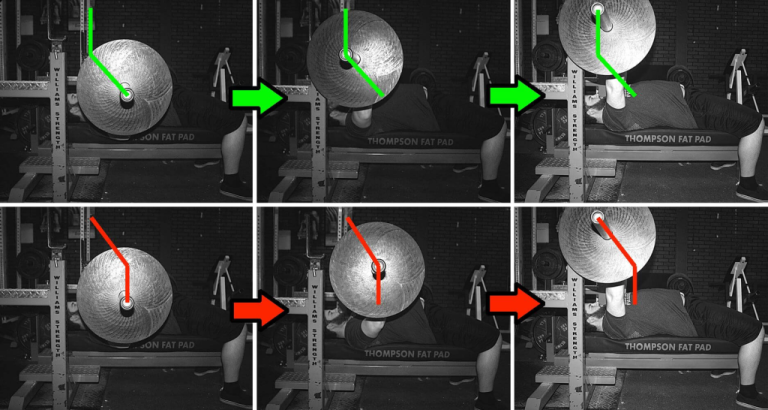3 Golden Rules for Using the Barrett Bench Press
The barbell bench press is one of the exercises that, in my opinion, are MUST DOs when it comes to making the most of your time in the gym. This kind of exercise will help you develop the fundamental strength that will help you get stronger overall and transfer to other exercises. In addition, my three golden rules will teach you everything you need to know about benching properly if you want a large chest. This will allow you to safely overload with the highest possible weight!
Golden Rule #1 – Learn How To “Pack” Your Shoulders
When bench pressing, if your shoulders are not RETRACTED & DEPRESSED, you’ll quickly learn what it means to plateau and have shoulder pain.
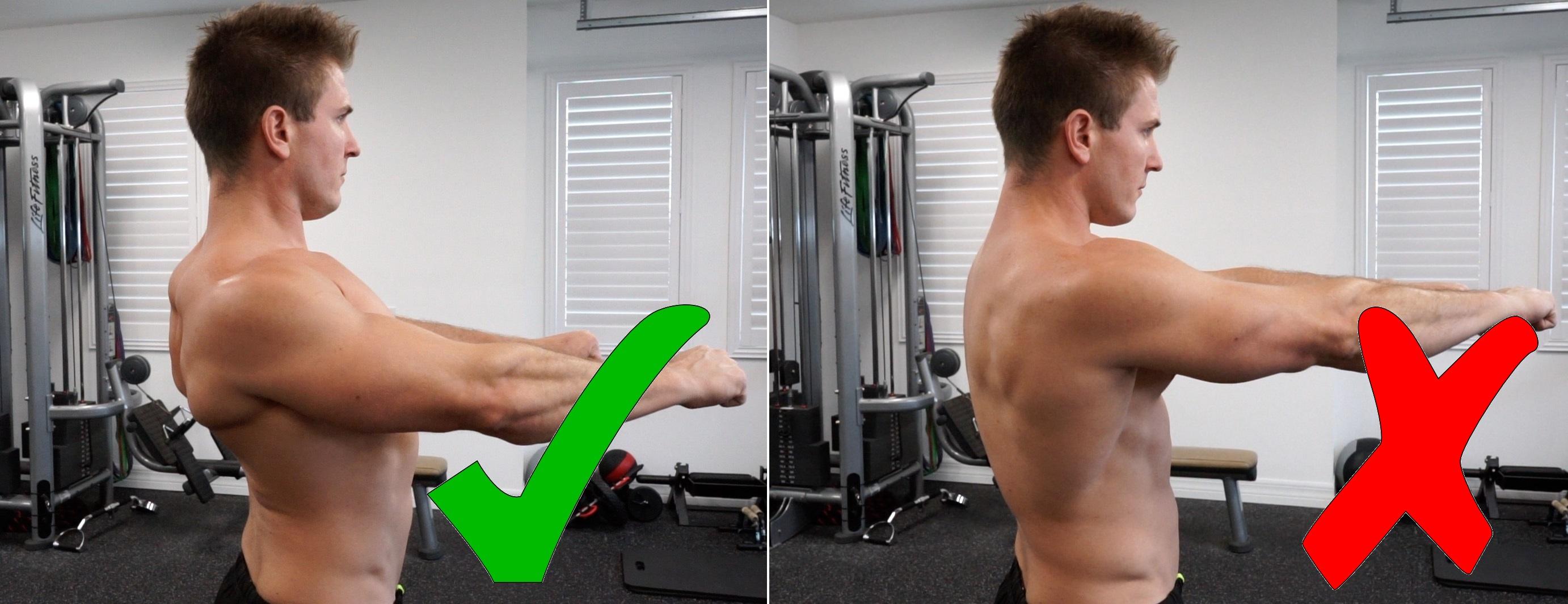
In fact, this is the number 1 thing I see that guys do wrong in the gym on a weekly basis. Packing your shoulders not only helps protect them, but also changes the bar path the barbell moves through when benching, allowing your chest to do the majority of the work to ensure you’re training the entire chest!
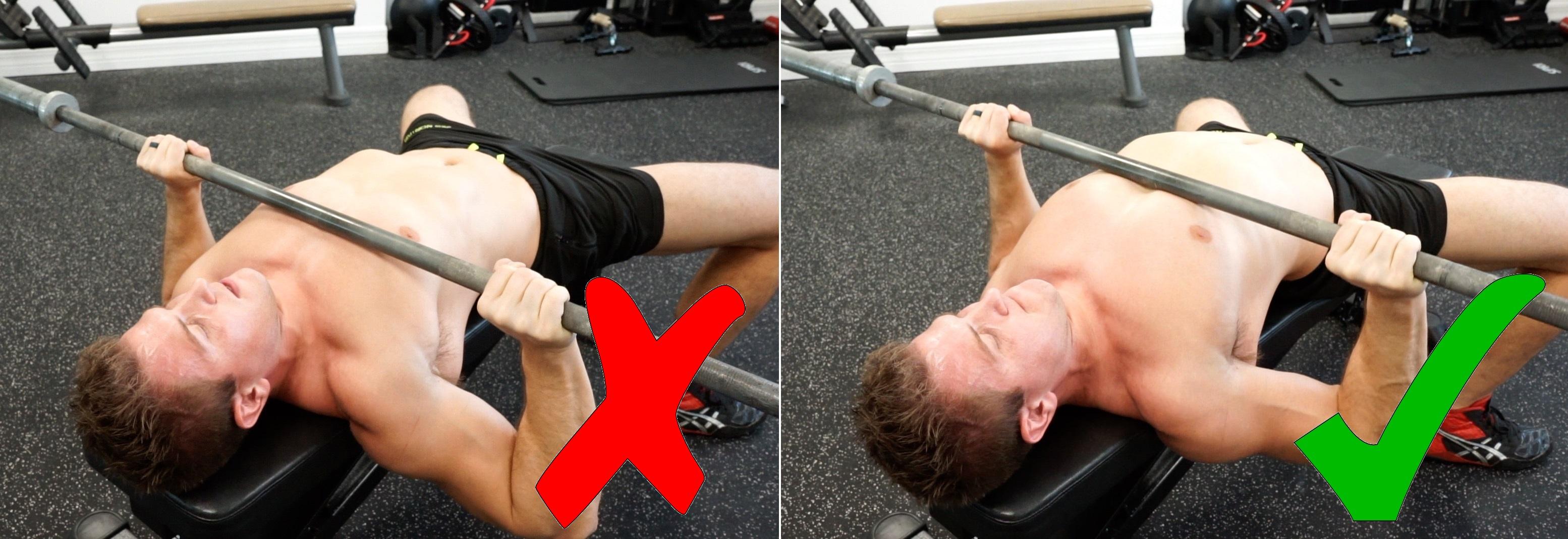
For example, when your back is flat you’ll bench more over your shoulders instead of your chest and you’ll almost immediately start flaring your elbows as well.
Guys, always remember that whatever push exercise you do, you’re always going to target the muscles that are IN FRONT the most. If you keep your back flat and shoulders unpack, which will cause them to slightly round forward, you’re going to activate a lot more deltoids and less chest on every rep.
So, keep your shoulders packed throughout the entire set to avoid shoulder pain and to maximize your chest activation!
Golden Rule #2 – Use The Right Grip Width For YOUR Body Type
Now, I’m not saying that the perfect grip width differs a lot from person to person. In fact, it’s usually just a slight adjustment that’s needed the majority of the time. However, your grip should ALWAYS be about shoulder width or a bit wider.
A grip that’s too close will shift the focus of the exercise to the triceps and if you’re too wide, this will bring more deltoids into the movement, reduce the overall range of motion and contraction of the chest as well as raise the risks of a shoulder injury.
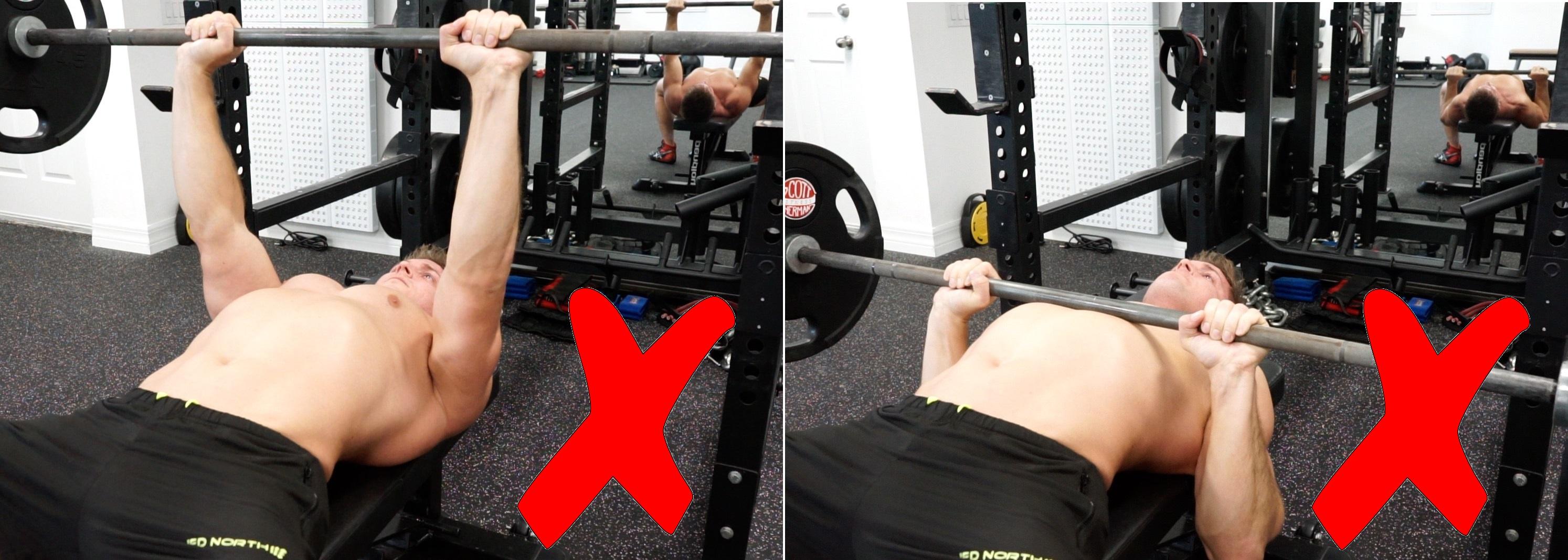

A good rule of thumb that’s always worked for me is to put the tips of my thumbs on the edge of the knurling on the barbell and then from there get a super tight grip on the barbell.
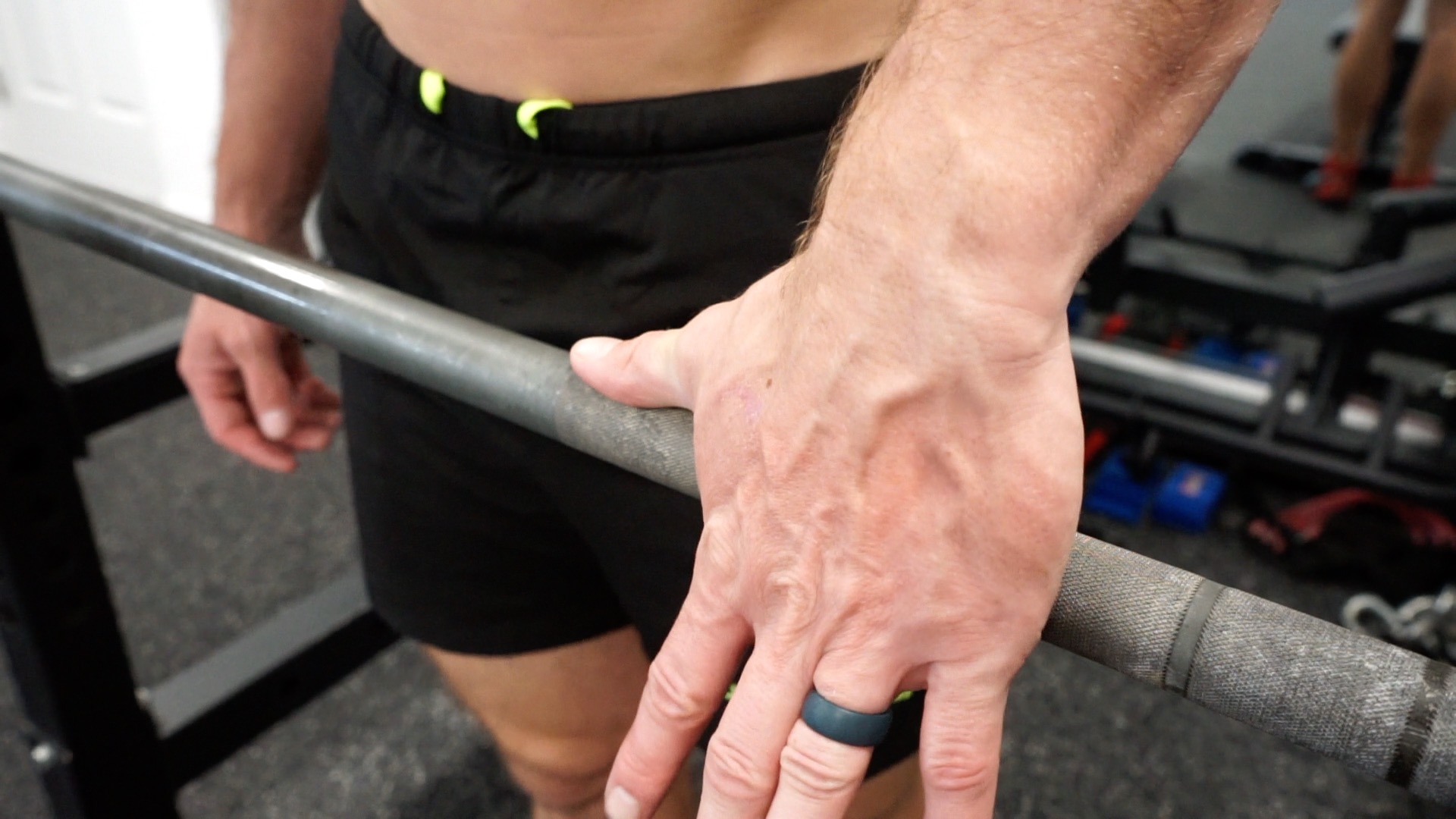
This will get you in the optimal position that will help you keep your shoulders packed and elbows tucked in through your entire set.
Golden Rule #3 – Understand That The Barbell Bench Press Is A Full Body Movement
If you can’t feel the weight from the barbell from head to toe, you are doing it wrong. You should feel tension in your feet, legs, butt, core, back, chest and arms on every rep.
Whether barbell or dumbbell bench pressing, to lift as heavy as you can, everything starts from having a solid base.
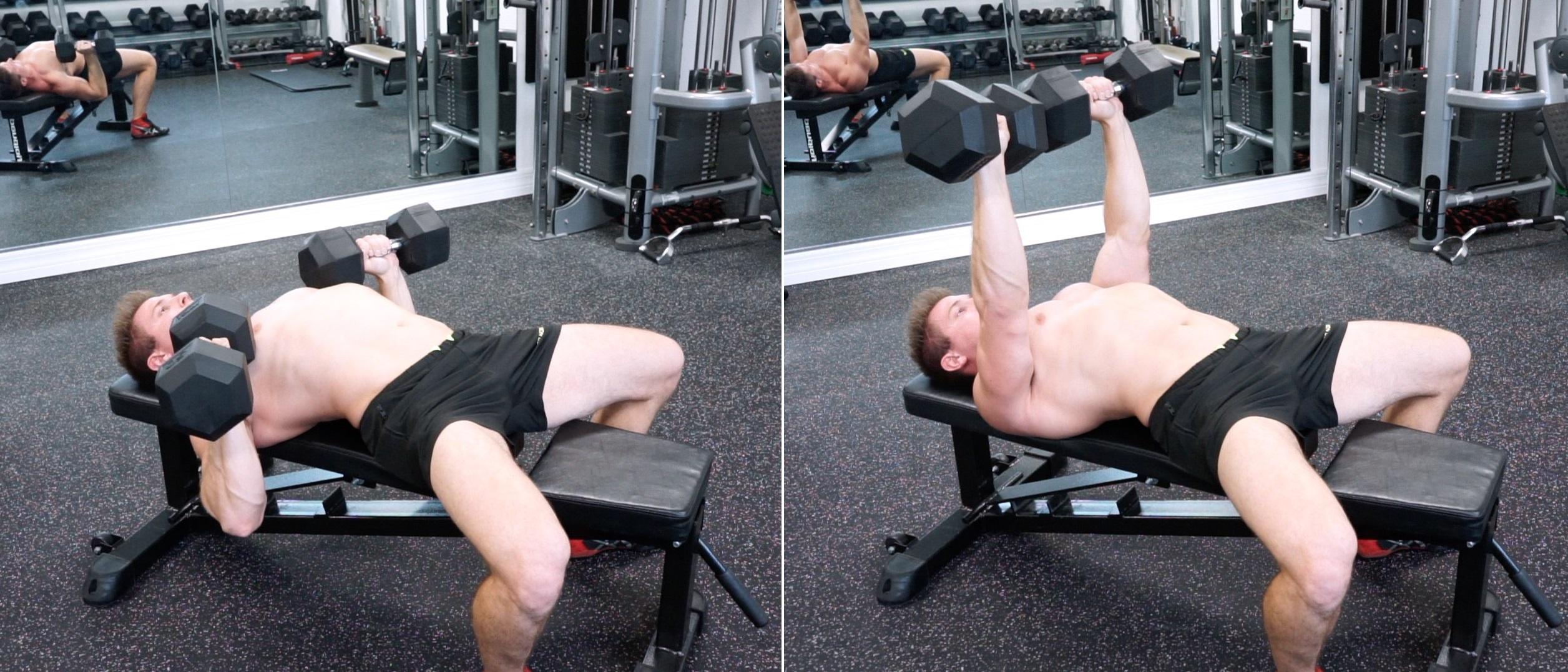
But what makes the barbell bench so great is that it’s a lot easier to get into position and keep everything TIGHT before un-racking the weight.
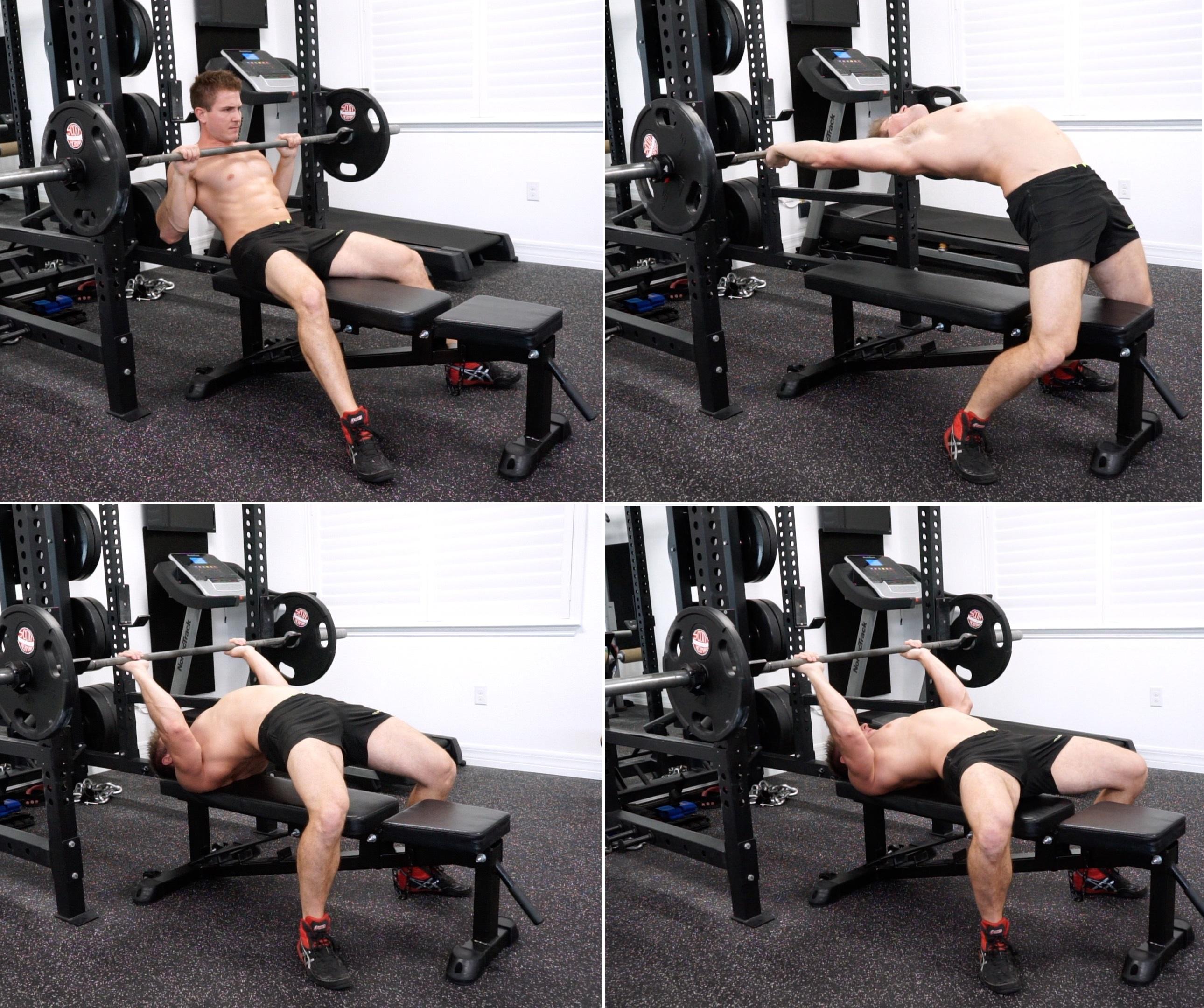
With dumbbells you have to roll back and then fine tine your starting position. But with the barbell, you can place both hands on the bar, plant your feet, and then slide up the bench ensuring your shoulders are packed as tight as possible before un-racking the weight.
In fact, if you’ve never taken the time to REALLY set up for a set of bench pressing, once you try these tips I bet you will almost immediately be able to add 5 – 10lbs to your bench!
Now you CAN place your feet on the bench instead of the ground if you want to make the PUSH of the movement a lot more CHEST-focused and not so much a fully body exercise.
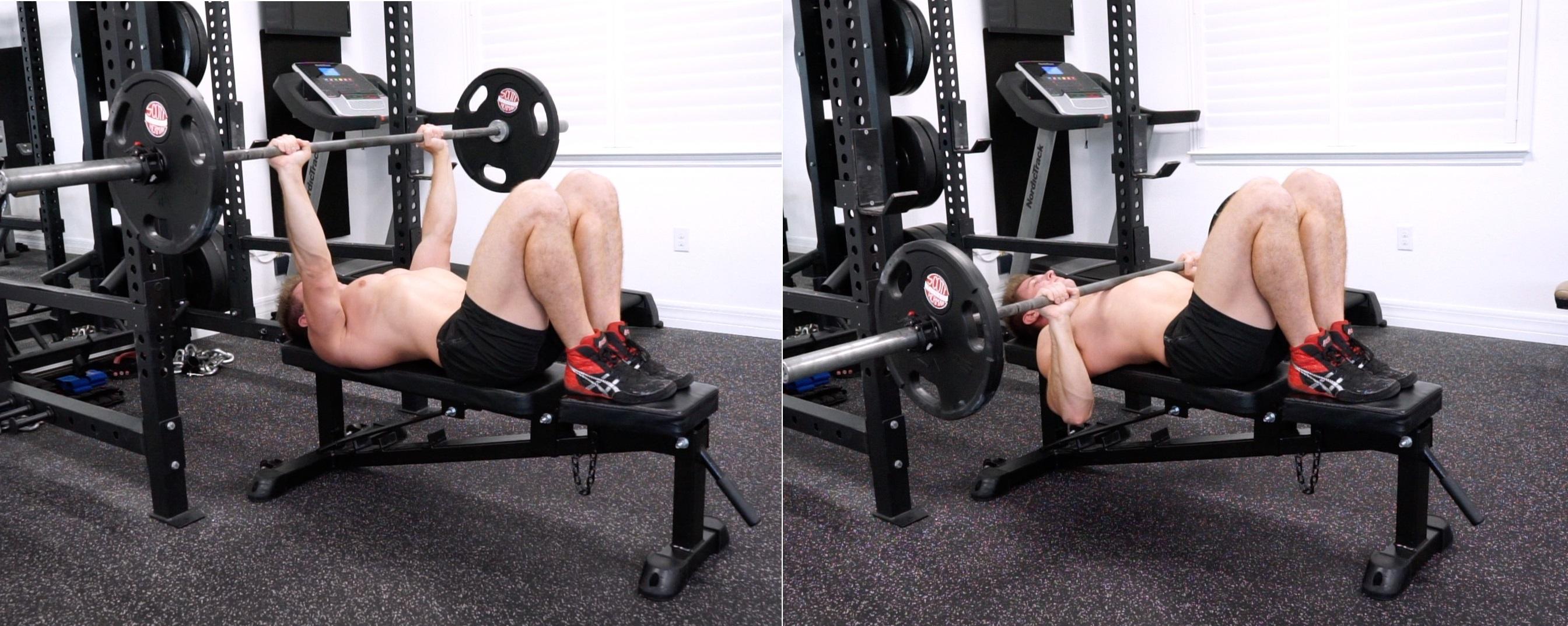
But if the goal is to grow you want to be able to lift as much weight as possible to OVERLOAD your chest.
So if anything, keep your feet on the ground for the majority of your sets and if you want to add in a few sets of your feet on the bench AFTER your chest has already been fatigued. That could be a good way to incorporate this alternative form into your training. Basically more as a “burnout set” than a true “working set”
But no matter which variation you choose, always remember to keep your core flexed and engaged on every rep. A loose core will result in a massive decrease in your overall strength when benching!
Now For Those Of You Who Made It This Far, I Have A Bonus Tip!
If you’re still not quite feeling your chest activate while bench pressing, this is what I want you to do. Once you get into position and un-rack the barbell, I want you to squeeze it as hard as you can while trying to push your hands together. This will force a much harder chest contraction on every rep.
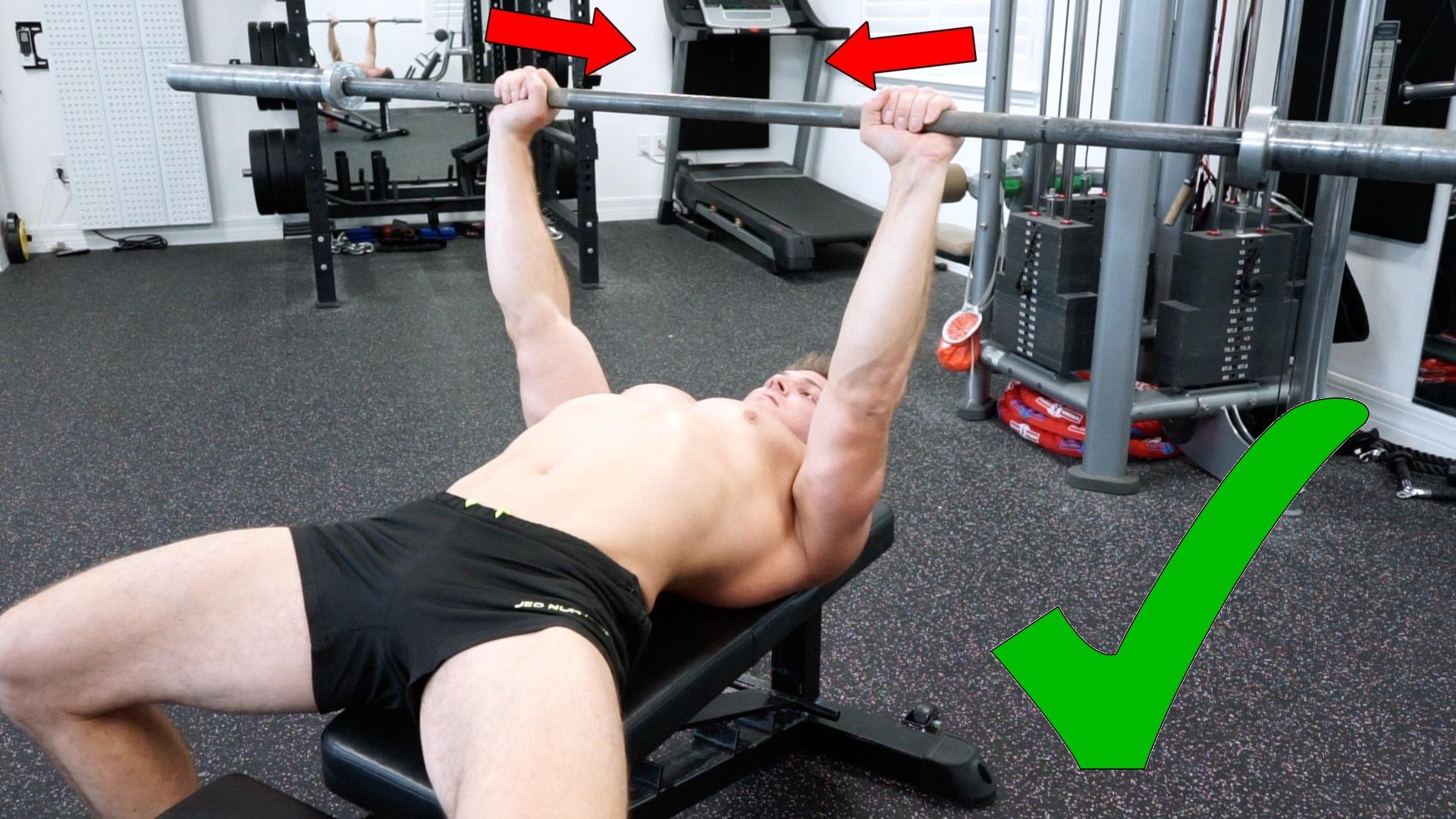
Just be careful you don’t push your hands together so hard that they move and meet in the middle because that would be super embarrassing…!
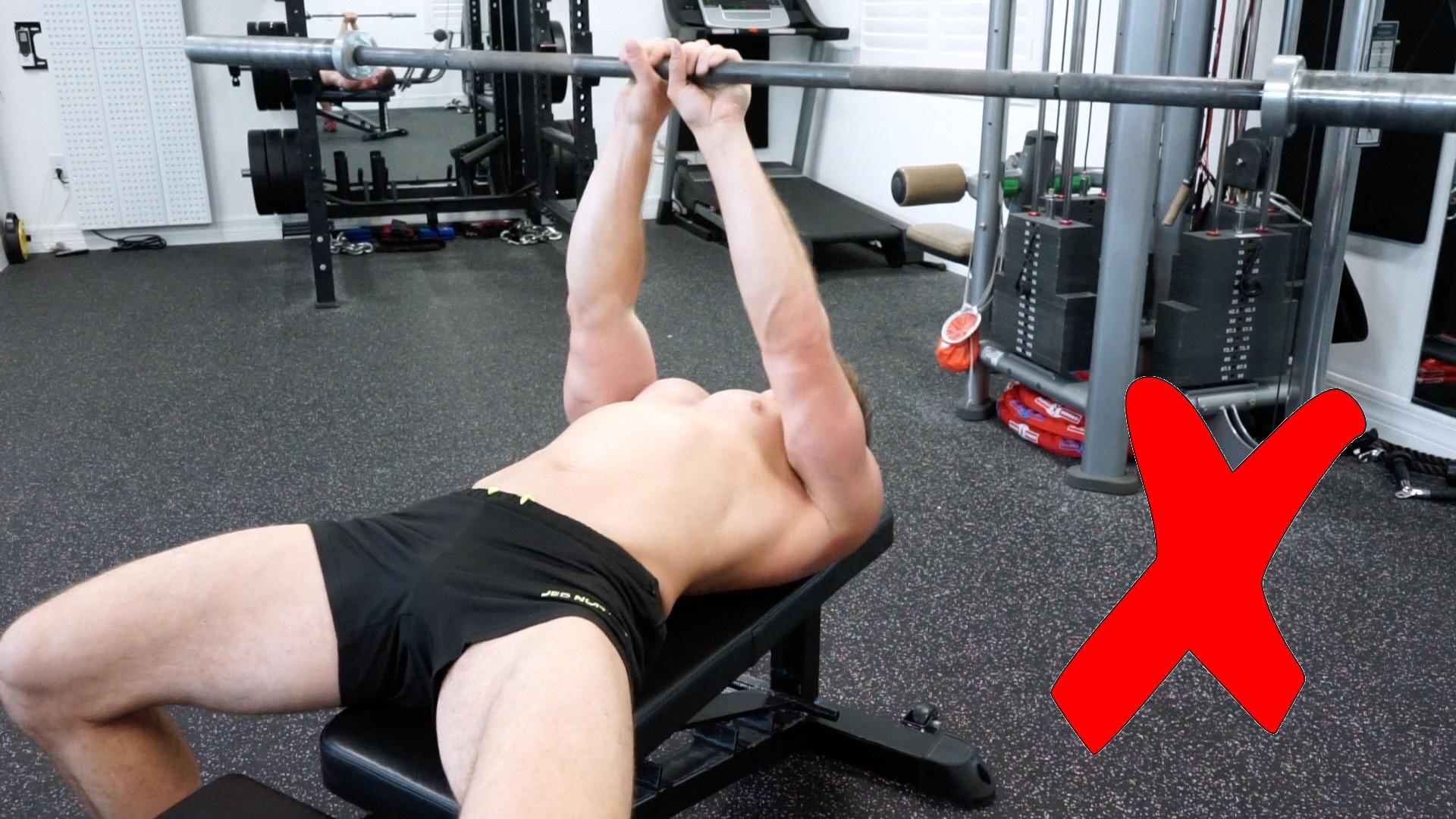
Push them together just enough to feel that extra chest engagement!



